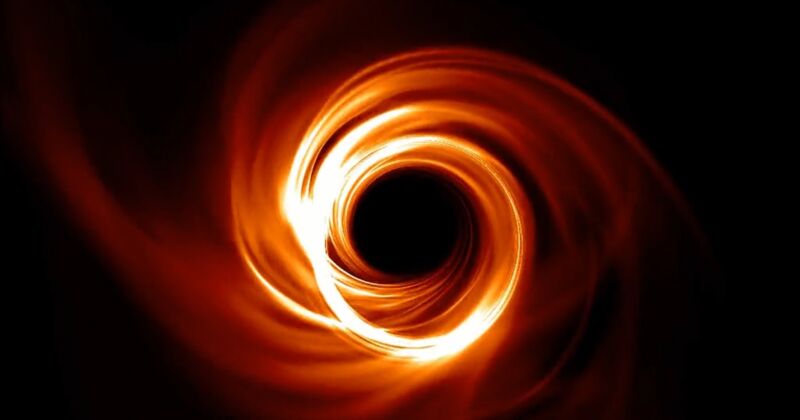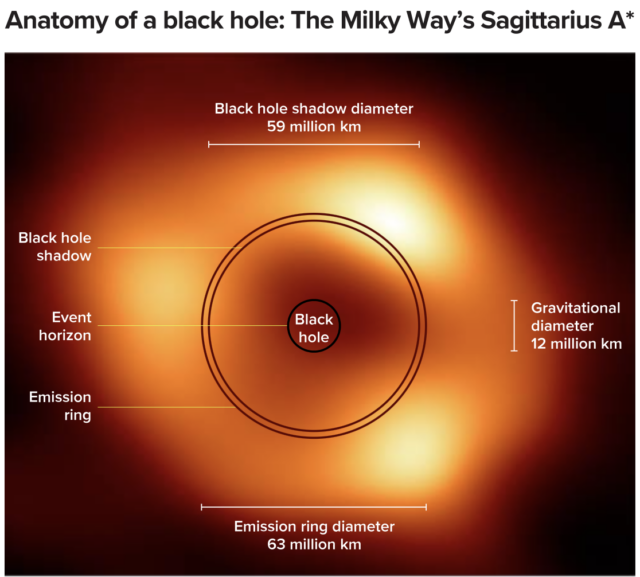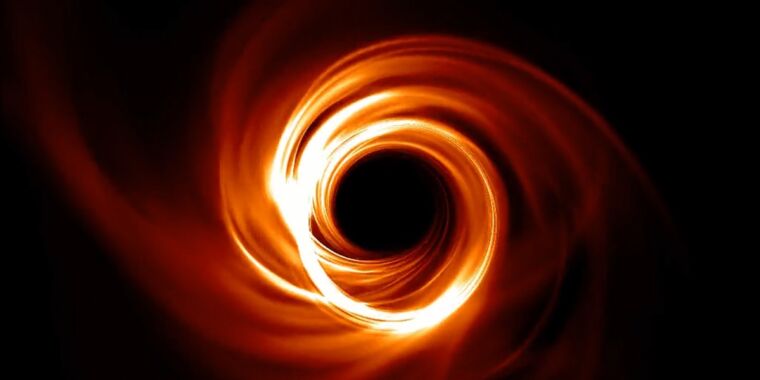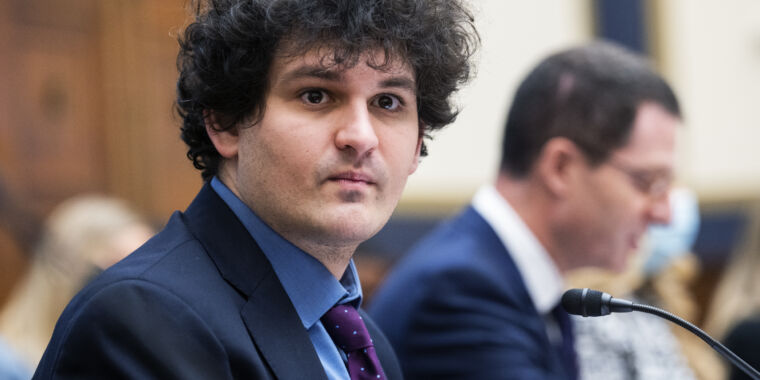
Black holes keep their secrets close. They imprison forever anything that enters. Light itself can’t escape a black hole’s hungry pull.
It would seem, then, that a black hole should be invisible—and taking its picture impossible. So great fanfare accompanied the release in 2019 of the first image of a black hole. Then, in spring 2022, astronomers unveiled another black hole photo—this time of the one at the center of our own Milky Way.
The image shows an orange, donut-shaped blob that looks remarkably similar to the earlier picture of the black hole in the center of galaxy Messier 87. But the Milky Way’s black hole, Sagittarius A*, is actually much smaller than the first and was more difficult to see, since it required peering through the hazy disk of our galaxy. So even though the observations of our own black hole were conducted at the same time as M87’s, it took three additional years to create the picture. Doing so required an international collaboration of hundreds of astronomers, engineers, and computer scientists and the development of sophisticated computer algorithms to piece together the image from the raw data.

These “photos” do not, of course, directly show a black hole, defined as the region of space inside a point-of-no-return barrier known as an event horizon. They actually record portions of the flat pancake of hot plasma swirling around the black hole at high speeds in what’s known as the accretion disk. The plasma is composed of high-energy charged particles. As plasma spirals around the black hole, its accelerating particles emit radio waves. The blurry orange ring seen in the images are an elaborate reconstruction of these radio waves captured by eight telescopes scattered around the Earth, collectively known as the Event Horizon Telescope (EHT).
The latest image tells the tale of the epic journey of radio waves from the center of the Milky Way, providing unprecedented detail about Sagittarius A*. The image also constitutes “one of the most important visual proofs of general relativity,” our current best theory of gravity, says Sera Markoff, an astrophysicist at the University of Amsterdam and member of the EHT collaboration.
Studying supermassive black holes such as Sagittarius A* will help scientists learn more about how galaxies evolve over time and how they congregate in vast clusters across the universe.
From the galactic core
Sagittarius A* is 1,600 times smaller than Messier 87’s black hole that was imaged in 2019 and is also about 2,100 times closer to Earth. That means the two black holes appear to be about the same size in the sky. Geoffrey Bower, an EHT project scientist at the Academia Sinica Institute of Astronomy and Astrophysics in Taiwan, says that the resolution required to see Sagittarius A* from Earth is the same as would be required to take a picture of an orange on the surface of the Moon.
The center of our galaxy is 26,000 light-years away from us, so the radio waves collected to create this image were emitted around the time that one of the earliest-known permanent human settlements was constructed. The radio waves’ voyage began when they were first emitted from particles in the black hole’s accretion disk. With a wavelength of about 1 mm, the radiation traveled toward Earth relatively undisturbed by the intervening galactic gas and dust. If the wavelength were much shorter, like visible light, the radio waves would have been scattered by the dust. If the wavelength were much longer, the waves would have been bent by charged clouds of plasma, distorting the image.








